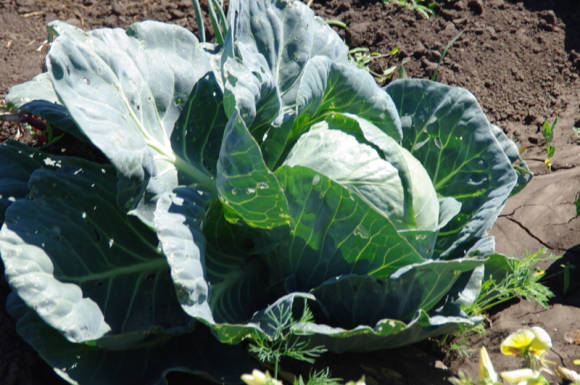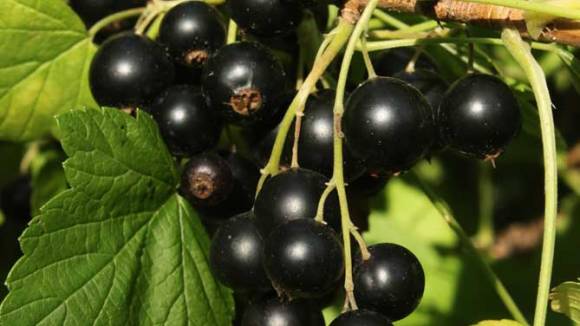 |
In the cuisine of the Slavic peoples, white cabbage occupies one of the leading places. There is even a proverb on this score, "Shchi and porridge is our food." But the history of this wonderful vegetable is much older. In the era of antiquity, it was known not only as a valuable food culture, but also used as a medicinal plant. In the wild, cabbage is not found. This is the collective work of several generations of nameless ancient breeders. A head of cabbage is a huge bud, which, without human help, is not able to bloom and release a peduncle. Therefore, this plant turned out to be completely dependent on its creator - in order to get seeds, it is necessary to cut the edges of the head of cabbage in the second year of life.
Where is the birthplace of this plant, it is not known for certain. Some authors believe that it was bred in the Mediterranean, others are of the opinion that it got there from Colchis. Now this is difficult to establish. There is a legend about the origin of cabbage, according to which the god of winemaking Dionysus decided to punish the Thracian king by severely beating him. The proud warrior could not bear the humiliation and large tears flowed from his eyes, which, falling to the ground, turned into plants as round as a head.
Cabbage in Rome was served to the table of all segments of the population, but for some reason for dessert. Mentions of this plant as a remedy are found in the writings of Hippocrates, Aristotle, Theophrastus, Dioscorides and Pliny the Elder. The Romans attributed properties to cabbage to cure insomnia, soothe headaches, and cure deafness. Cabbage leaves were used as an antidote, including for alcohol poisoning, and externally applied for wounds and boils. In the 19th century, its medicinal properties were somehow almost forgotten. Even the monograph on cabbage published in 1883 by the French physician Blanca, who emphasized its nutritional value and disinfecting properties, did not help. A new impetus to the use of cabbage as a medicinal plant was the discovery in 1948 of methylmethionine, called vitamin U, from the Latin word "ulkus" - an ulcer. This compound cured stomach ulcers in experimental animals.
 |
Cabbage contains 2.6-8% sugars (glucose, sucrose, fructose, maltose, raffinose), 0.6% pectin, 0.1% starch, 1.2-1.7% fiber. There are more proteins in cabbage than in rutabagas, turnips, carrots - up to 2.5%. In addition, organic acids, essential amino acids, including lysine, purine bases, lipids, fatty acids, high molecular weight alcohols, mustard oils, thioglycosides (glycosides containing a sulfur atom) are found in cabbage.
A feature of cabbage is that ascorbic acid (up to 70 mg /%) is present in it not only in free form, but in the form of a precursor, ascorbigenin, which is almost not destroyed during fermentation and storage. With moderate heat treatment, unlike most vegetables, the vitamin C content in cabbage even increases slightly. By the way, it is a historical fact that Russian seafarers were less likely to suffer from scurvy than Europeans, due to the fact that they took sauerkraut with them. When pickling cabbage in halves, one and a half times more vitamin C is retained than in shredded cabbage. Promotes the preservation of ascorbic acid and a special storage regime. Sauerkraut is best preserved in a cold place with enough brine or frozen. But if it is then frozen, then thawed, the loss of vitamin C is 30-40% per month.
In addition to ascorbic acid, this wonderful vegetable contains vitamins P, PP, K, D, pantothenic acid, carotene, biotin, tocopherol, inositol. The outer leaves also contain folic acid, but in order to "convey" it to the body, you need to eat fresh cabbage.
The mineral composition is also diverse. These are, first of all, salts of potassium, sodium, calcium, magnesium, iron, manganese, phosphorus, sulfur and chlorine. Cabbage juice has an almost neutral reaction and is useful for patients with high acidity of gastric juice. (Cm. White cabbage).
In scientific medicine, dry cabbage juice or methylmethionine sulfonium chloride is used for gastric ulcer and duodenal ulcer, gastritis and gastralgia. However, experimental studies and clinical observations of patients have shown that the use of natural cabbage juice gives a greater effect than the finished product. Cabbage tissue juice additionally possesses bactericidal, bacteriostatic and fungicidal properties. And vitamin U has a beneficial effect on the metabolism of thiamine and choline, improves the metabolism of the gastric mucosa, increases its resistance to damaging factors. Moreover, the antiulcer activity of cabbage depends on the conditions and place of cultivation, the time of collection and on insolation. But it is better not to use the cabbage leaf, since the fiber contained in it provokes flatulence, which only worsens the condition.
 |
Cabbage juice cook for no more than 1-2 days, squeezing in a juicer or passing the leaves through a meat grinder and squeezing through cheesecloth. The appearance of the smell of hydrogen sulfide indicates that the juice is no longer suitable for use. If pre-shredded cabbage is poured over with boiling water, allyl mustard oil is removed from it and enzymes are destroyed. This juice is preferable for patients with high acidity of gastric juice.
If, after taking fresh cabbage juice, heartburn, belching, bloating, pain in the stomach appear, it is better to expose the juice to short-term heating in a water bath no higher than 90 ° C and no longer than 3 minutes, stirring with a spoon. Allyl mustard oil is then volatilized and the irritating effect is reduced. Doses for taking are quite large - about a liter of juice per day: 2 glasses in the morning, 2 glasses for lunch and 1 glass in the evening 20-30 minutes before meals. The course of treatment is 30-45 days.
In addition, clinical studies have shown that vitamin U contained in cabbage improves lipid metabolism and has a beneficial effect on patients with coronary atherosclerosis. In addition to methylmethionine, tartronic acid has anti-sclerotic properties, which inhibits the conversion of carbohydrates into fats and prevents the deposition of fats and cholesterol. But, unfortunately, it is destroyed during heat treatment.
Cabbage contains a lot of choline, which regulates fat metabolism, little sucrose and almost no starch. All this together makes it useful in the diet of patients with diabetes mellitus.
The low calorie content of cabbage in combination with a variety of vitamins and minerals makes it extremely useful for obesity.
In folk medicine, cabbage juice with sugar or honey is used for hoarseness and coughing. Even in ancient Rome, it was considered a good remedy for tuberculosis. With inflammation of the respiratory tract, it is recommended to take a decoction of cabbage with honey. As it turned out, this folk experience has a completely scientific basis. Cabbage contains phytoncides that are active against staphylococcus, tubercle bacillus and some other pathogenic microorganisms.
Has significant medicinal value and cabbage pickle... Some vitamins and other nutrients pass into it, but it is devoid of fiber, which causes bloating. In folk medicine, it is often advised to drink it as a vitamin and fortifying drink to improve digestion, with constipation, hemorrhoids.
Contraindications Cabbage is contraindicated after surgery on the abdominal cavity and chest, with especially severe exacerbations of peptic ulcer disease, gastrointestinal bleeding, it is not included in the diet for acute gastroenterocolitis accompanied by diarrhea, as well as for kidney disease.Other diets include fresh and cooked cabbage.
But sauerkraut is contraindicated in patients with gastric ulcer and duodenal ulcer, gastritis, pancreatitis, liver and kidney disease. Due to the content of significant amounts of table salt, you should not get carried away with it by patients suffering from hypertension, kidney disease. In this case, it is advisable to wash the cabbage from the brine or immediately ferment with a minimum amount of salt.
Cabbage is widely used externally for boils, scrofula, joint pain, mastitis, and burns.
For cosmetic purposes, on dry skin with age spots, it is recommended to first apply olive oil, then apply a hot soda compress at the rate of 1 teaspoon of baking soda per 1 liter of water, and then apply cabbage leaf gruel for 10-15 minutes.
When caring for oily skin, sauerkraut is used. To do this, it is crushed and applied to the face for 20-25 minutes. After that, wash off and lubricate the face with a nourishing cream.
Cm. White cabbage, sauerkraut with caraway seeds and juniper
Sauerkraut in Russian
Cabbage stuffed with apples
Cabbage rolls with grated horseradish and beets
Cabbage soup with turnips









